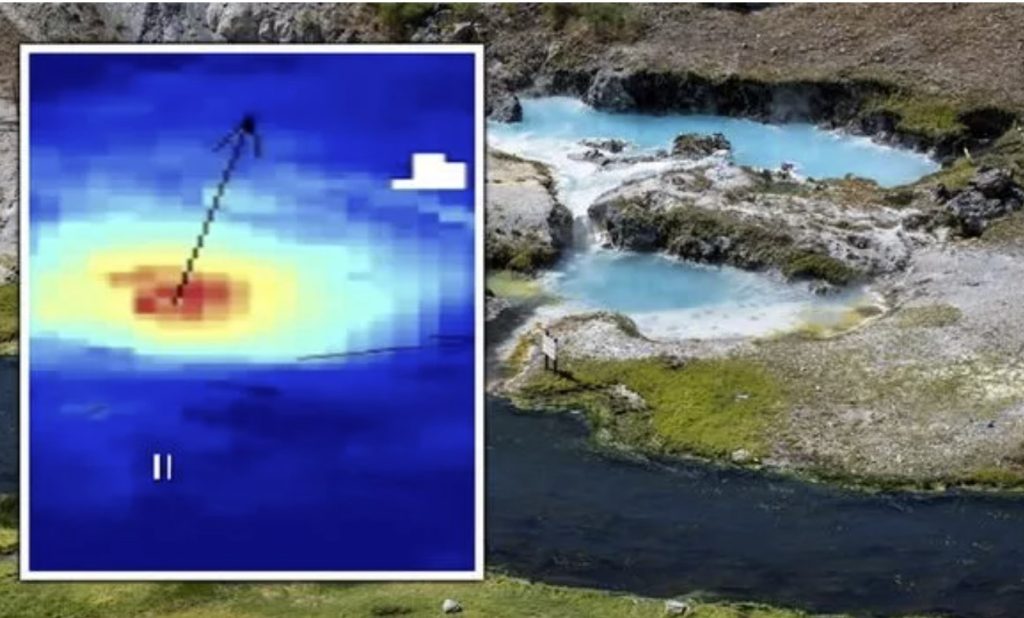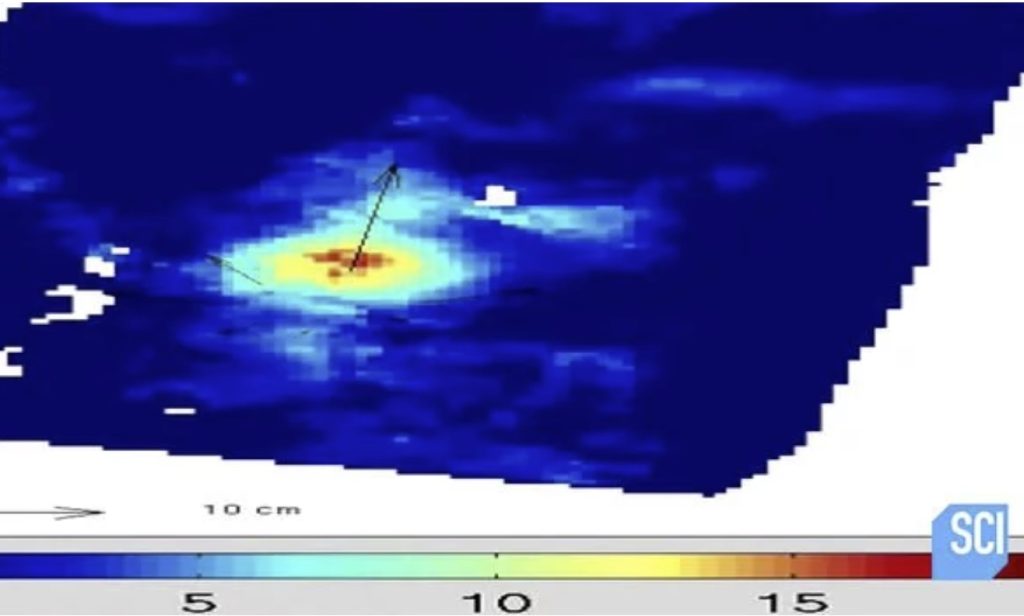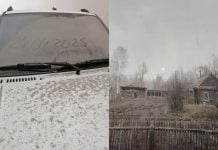
THE LONG VALLEY CALDERA supervolcano is considered to be one of the world’s most dangerous, with signs that an eruption is “imminent” having surfaced across the Californian region.
Long Valley Caldera is a depression in eastern California that sits next to the Mammoth Mountain.
One of the planet’s largest calderas — a huge, cauldron-like hollow that forms after an eruption — it measures a staggering 20 miles long and 11 miles wide, and is up to 3,000 feet deep.
It was originally formed 760,000 years ago when a devastating eruption released hot ash that later cooled and formed the Bishop tuff, a welded tuff that characterises the region.
Ash was sent eight miles into the air, with deposits believed to fall as far east as Kansas.
Despite the absolute chaos that Long Valley could cause if it were to erupt, little is said of it. Instead, more attention is placed on Yellowstone, another supervolcano hundreds of miles to the north east.
Yet, according to the Science Channel, Long Valley could well be on its way to erupting.
The supervolcano and its recent activity was explored during the channel’s 2017 documentary, ‘Secrets of the Underground’.
Rob Nelson, a scientist and the show’s narrator, said: “There are alarming signs of possible volcanic activity.
“And there are clues pointing towards an imminent eruption scattered throughout this valley — the site of the second largest explosive volcanic eruption in North America.”
Even if a modern-day eruption from Long Valley was not on the same scale as previous events, it still poses an “existential threat” to the millions who live around it.
An investigation carried out by the Science Channel in a part of the valley found several instances of smoke billowing out from beneath the ground.
Jared Peacock, a geophysicist, also pointed out an alarming feature of the caldera that could spell trouble using InSAR data that has monitored the region for the last 20 years.
One of the most troubling areas InSAR pinpointed happened to be very close to Mammoth Lakes, a town in the Sierra Nevada mountains.
Pointing to a map created from the data, Mr Peacock said: “Right here in the middle, you see there’s a resurgent dome.”

A baking-hot red point is pictured located directly beneath the ground, where magma likely resides.
Mr Peacock added: “Something underneath it is pushing it upwards.”
In order to determine whether the Long Valley Caldera was truly coming back to life, Mr Peacock and Mr Nelson set up a pair of sensor pipes directly above the point that the InSAR data identified the resurgent dome, and scanned for signs of trouble deep underground.
The pipes helped detect changes in the Earth’s magnetic field, enabling the two scientists to determine whether any liquid was underground.
Running the tests, they discovered massive amounts of liquid beneath the domes’ surface: clear signs of volcanic activity.
But this activity was not centralised, which would be cause for concern. Rather, it was sparse and spread out.

Mr Peacock said: “We can say conclusively that there is no giant magma chamber below. But there are smaller satellite ones around the area.”
A year later, and a study published in the science journal, GeoScienceWorld, found evidence of ground deformation at the supervolcano.
Geologists who led the study found “ongoing uplift suggests new magma may have intruded into the reservoir” since at least 1978.
The uplift could be evidence of moving molten rock or the crystallisation of material deep beneath the ground.
The study reads: “Despite 40 years of diverse investigations, the presence of large volumes of melt in Long Valley’s magma reservoir remain unresolved.”
The scientists estimated the Long Valley Caldera reservoir contains “considerable qualities of melt”, likely greater than 240 cubic miles (1,000 cubic kilometres).
About 27 percent of this melt could be hot enough to be scorching liquid rock.
According to the United States Geological Survey (USGS), Long Valley last erupted about 100,000 years ago. [Express]
Now if you enjoyed this article, I recommend you watching Cascadia, The Big One:
Now subscribe to this blog to get more amazing news curated just for you right in your inbox on a daily basis (here an example of our new newsletter).
You can also follow us on Facebook and/ or Twitter. And, by the way you can also make a donation through Paypal. Thank you!
You should really subscribe to QFiles. You will get very interesting information about strange events around the world.














The world waxes old like garment
So the alarmists get their say… Now, does any Genius or anybody else have a solution to the scary problem?
Sould be a concern for all of us. The Bible says “the elements will melt in the heat.” 1 Peter 3:12. No I don’t understand it all but I believe it all and want to be ready for something better in God’s great plan.
Heads it’s the volcano that destroys mankind…tails it’s the killer Omicron virus.
“Despite 40 years of diverse investigations, the presence of large volumes of melt in Long Valley’s magma reservoir remain unresolved.”
That means people spent their entire careers without solving the problem. Here’s the big difference between academics and industry. Academics can theorize for decades and eat well while pontificating but in industry you work on problems people actually care about like is there a mineral or oil deposit at a particular spot and people care enough about it to spend tens of millions of dollar to drill a well and see if your theories are right or wrong.
Nuther false alarm, most likely. Journalists are good at it. They’ve always got ‘high apple pie in the sky hopes’.
What about the disappearance of Artic ice?
There’s more ice now than ever!
Scientists are way too political….I’ll take my chances on long valley!
Let us hope it is a couple of hundred years, at least. With “Senile Old Joe” and his absolute incompetent administration as leadership not only America but all of North America and most of Central America is doomed.
“… likely greater than 240 cubic miles (1,000 cubic kilometres”
Good math there chief. Thinks for making it so easy to ignore your article.
His math is correct. check it out.
well i am sitting on this bar stool talking like a dam fool and got the 12 o’clock news blues, i given up hope on the afternoon soaps and a bottle of cold brew.
So Mother Nature is striking back at mankind…the Libs should be ecstatic.
all BULLSHIT
Of course “imminent eruption” here means maybe within the next couple hundred thousand years.
Don’t we have more… um… pressing matters with which to concern ourselves?
Dante’s Peak.
INSAR RADAR video was pretty cool. I skied Mammoth mountains as a youth. A very beautiful area.
There have been numerous earthquakes out there as I remember.
That caldera is massive. 8 mile high blast. Wow, that would be a cataclysmic event.